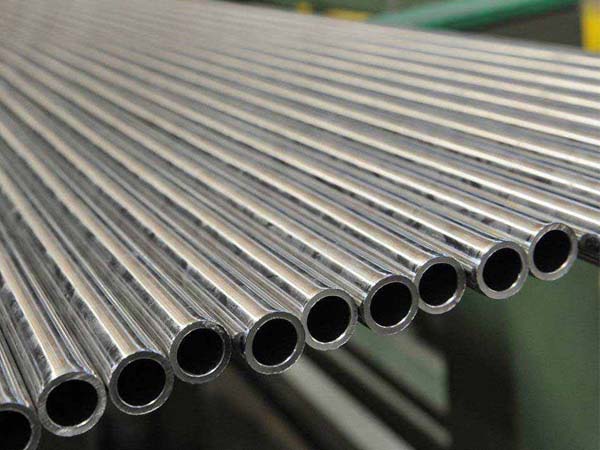
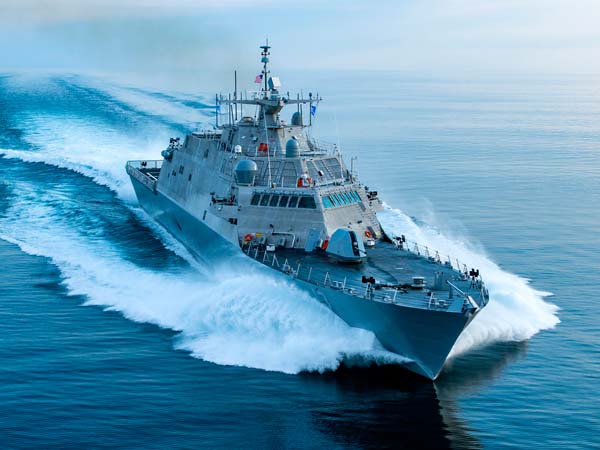
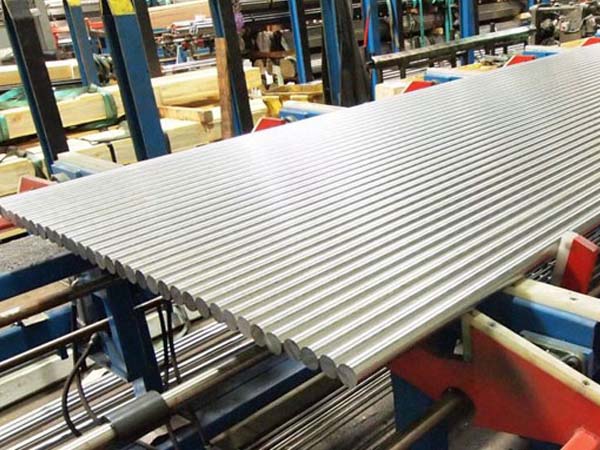

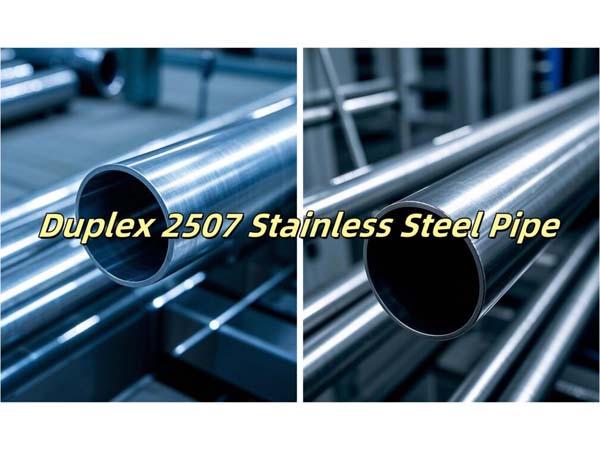

Phone
+86-731-82250427
Address
25th floor, C3 Building, Wanda Plaza, Kaifu District, Changsha, Hunan Province, China.
 May 24 2023
May 24 2023
1 Difficulties in processing stainless steel
1.1 High cutting force and high cutting temperature
This type of material has high strength, large tangential stress, and large plastic deformation during cutting, so the cutting force is large. Besides, the material's thermal conductivity is extremely Poor, increasing by cutting temperature, and the high temperature is often concentrated in the narrow area near the cutting edge of the tool, thereby speeding up the tool Wear.
1.2 Serious work hardening
Austenitic stainless steels and some high-temperature alloy stainless steels are austenitic, and the work hardening tendency during cutting is large, usually
Several times of ordinary carbon steel, the tool cuts in the work-hardened area, which shortens the tool life.
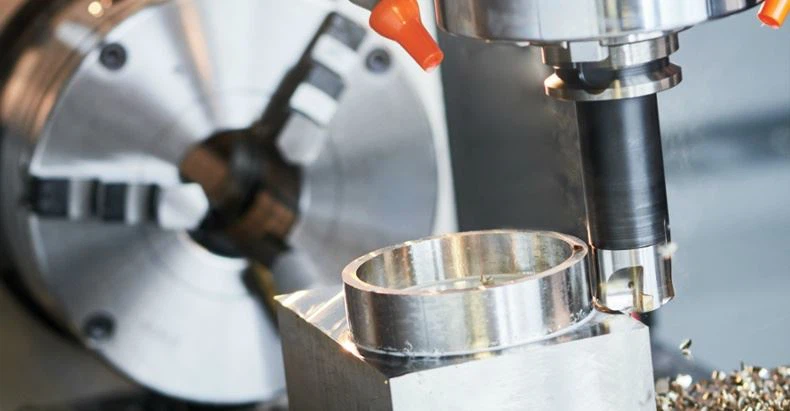 1.3 Easy to stick a knife
1.3 Easy to stick a knife
Whether austenitic stainless steel or martensitic stainless steel has the characteristics of strong chip toughness and high cutting temperature during processing. Daqing
When tough chips flow through the rake surface, sticking, welding, and other sticking phenomena will occur, affecting the surface roughness of the processed parts.
1.4 accelerated tool wear
The above materials generally contain high melting point elements, high plasticity, and high cutting temperature, which accelerates tool wear and sharpens and frequent tool changes.
This affects production efficiency and increases the cost of tool use.
2 Processing technology of stainless steel parts
Through the analysis of the above-mentioned processing difficulties, the processing technology of stainless steel and the design of related tool parameters and ordinary structural steel materials should have
The major differences are as follows:
2.1 Drilling
During drilling, due to the poor thermal conductivity of the stainless steel material and the small elastic modulus, it is difficult to process the hole.
solution To solve the problem of hole processing of such materials, it is mainly to choose the appropriate tool material, determine the reasonable tool geometric parameters and the tool
The amount of cutting. When drilling the above materials, the drill bit should generally use W6Mo5Cr4V2A1, W2Mo9Cr4Co8 and other materials
The disadvantages of these drill bits are that they are relatively expensive and difficult to purchase. And the commonly used W18Cr4V ordinary When drilling with a standard high-speed steel drill bit, due to the small apex angle and too wide chips, it cannot be discharged out of the hole in time, and the cutting fluid cannot reach
The shortcomings of cooling the drill bit and the poor thermal conductivity of the stainless steel material cause the cutting temperature concentrated on the blade to increase, which is easy The two flank surfaces and the main edge are burned and chipped, which reduces the service life of the drill bit.
(1) Tool geometry parameter design When W18Cr4V ordinary high-speed steel drill is used for drilling, the cutting force, and cutting temperature are both It is concentrated on the drill tip. To improve the durability of the cutting part of the drill bit, the angle of the apex angle can be appropriately increased. The apex angle is generally 1350~At 140°, an increase in the apex angle will also reduce the rake angle of the outer edge and narrow the drill cuttings, which will facilitate chip evacuation. But after increasing the top angle, The blade becomes wider, resulting in increased cutting resistance. Therefore, the transverse edge of the drill must be sharpened. The angle of the transverse edge after grinding is 47°~55°,
The rake angle of the cutting edge is 39~5°. When grinding the cutting edge, the corner of the cutting edge and the cylindrical surface should be rounded to increase the strength of the cutting edge.
Due to the small elastic modulus of stainless steel material, the metal elasticity under the chip layer recovers greatly, and the work hardening is severe during the process.
If the relief angle is too small, it will accelerate the wear of the flank of the drill bit, and increase the cutting temperature and reduce the life of the drill bit.
Therefore, it is necessary to add Large clearance angle, but the clearance angle is too large, it will make the main edge of the drill bit thin, reducing the rigidity of the main edge, so the back angle should be 12°~15°
Is appropriate. To narrow the cuttings and facilitate chip evacuation, it is also necessary to open staggered chip separation grooves on the two flank faces of the drill.
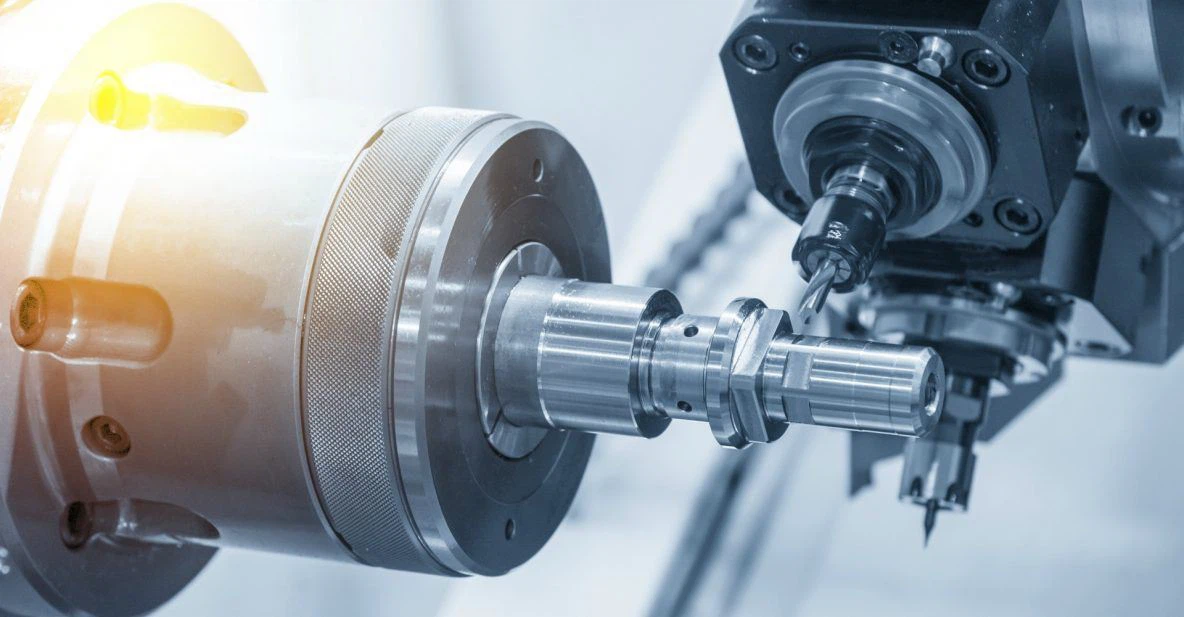
(2) When a cutting amount is selected for drilling, the selection of cutting amount should proceed from the basic point of reducing cutting temperature because of the high
High-speed cutting will increase the cutting temperature, and high cutting temperature will increase tool wear, so the most important cutting amount is
Select cutting speed. In general, the cutting speed of 12~15m/min is more suitable. The feed rate has a greater impact on the tool life
Small, but the feed rate is too small will cause the tool to cut in the hardened layer, aggravating wear; and if the feed rate is too large, it will make
The surface roughness becomes worse. Based on the above two factors, the feed rate should be 0.32~0.50mm/r.
(3) Cutting fluid selection When drilling, to reduce the cutting temperature, the emulsion can be used as the cooling medium.
2.2 Reaming processing
(1) Design of cutter geometric parameters Most of the reaming processing of stainless steel materials uses carbide reamers. The structure of the reamer and
The geometric parameters are different from ordinary reamer. To enhance the strength of cutter teeth and prevent chip clogging during reaming, the number of cutter teeth
Generally less. The reamer rake angle is generally 8°~12°, but in some specific cases, to achieve high-speed reaming, 0°~
5° front angle; rear angle is generally 8°~12°; the choice of the main declination angle depends on the hole, in general, the through-hole is 15°~30°,
The non-through hole is 45°; to discharge the chips forward during reaming, the blade inclination angle can also be appropriately increased. The blade inclination angle is generally
10°~20°; blade width is 0.1~0.15mm; inverted cone on reamer should be larger than ordinary reamer, cemented carbide reamer is generally 0.25~
0.5mm/100mm, high-speed steel reamer is 0.1~0.25mm/100mm; the length of the reamer correction part-generally for the ordinary reamer
65%~80%, of which the length of the cylindrical part is 40%~50% of the ordinary reamer.
(2) Cutting amount selection The feed amount during reaming is 0.08~0.4mm/t, the cutting speed is 10~20m/min, and the rough reaming allowance
The amount is generally 0.2~0.3mm, and the fine hinge allowance is 0.1~0.2mm. Carbide cutters should be used for coarse hinges and fine hinges
High-speed steel cutter.
(3) When the reaming hole of stainless steel is selected as the cutting fluid, oil or molybdenum disulfide of the full loss system can be used as the cooling medium.
2.3 boring processing
(1) Tool material selection Due to the large cutting force and high cutting temperature when machining stainless steel parts, the tool material should be selected as much as possible
YW or YG cemented carbide with high strength and good thermal conductivity. YT14 and YT15 cemented carbide knives can also be used for the finishing
sheet. When processing the above material parts in batches, ceramic material cutters can be used. Because the characteristics of such materials are mainly toughness,
The work hardening is serious. The chips cutting these materials are generated in the form of unit chips, which will cause the tool to vibrate and easily cause the knife
The edge is slightly chipped, so the first thing to consider when choosing a ceramic tool to cut such material parts is the micro toughness. Currently
Sialon is a better choice, especially a/BSialon material, because of its excellent resistance to high-temperature deformation and diffusion
The performance of wear is remarkable, and it is successfully applied to cutting nickel-based alloys, and its life span far exceeds that of Al2O3-based ceramics. Besides,
SiC whisker-reinforced ceramics are also a very effective tool material for cutting stainless steel or nickel-based alloys.
For the processing of hardened parts of this type of material, CBN (cubic boron nitride) blades can be used, with CBN hardness second only to gold
Corundum, the hardness can reach 7000~8000HV, so the wear resistance is very high, compared with diamond, the outstanding advantage of CBN is the heat resistance
Much higher than diamond, up to 1200 °C, can withstand very high cutting temperatures. Besides, its chemical inertness is very large, with iron group metals
It does not play a chemical role at 1200~1300C, so it is very suitable for processing stainless steel materials. The tool life is a hard alloy
Or dozens of times of ceramic cutters.
(2) Tool geometry parameter design The tool geometry parameter plays an important role in its cutting performance, to make the cutting light and smooth,
Carbide tools should use a larger rake angle to increase tool life. For general roughing, the rake angle is 10°~20°, semi-finished
15°~20° during processing; 20°~30° during finishing. The selection basis of the main declination angle is that when the processing system has good rigidity,
It can be 30°~45°; if the rigidity of the processing system is poor, it should be 60~75°, when the ratio of the length and diameter of the workpiece exceeds 10 times,
Can take 90°.
When boring stainless steel materials with ceramic tools, in most cases, ceramic tools are cut with negative rake angles. Front corner
Size-generally selected should be 5°~-12°. This is conducive to strengthening the cutting edge and giving full play to the superiority of ceramic tools with high compressive strength.
The size of the relief angle directly affects the wear of the tool and the strength of the cutting edge, generally 59~12°. The change of the main declination will affect
The change of radial cutting component and axial cutting component and the size of cutting width and cutting thickness. Because of the vibration of the processing system
It is extremely unfavorable for ceramic tools, so the selection of the main declination angle should help reduce this vibration, generally 30°~75°. Select
When CBN is used as the tool material, the geometric parameters of the tool are rake angle 0°~10°, rake angle 12°~20°, and main declination angle 45°~90°.
(3) The roughness value should be small when the rake face is sharpened. To avoid the phenomenon of chip sticking to the knife, the front and back face of the tool should be carefully edged
Grinding to ensure a small roughness value, thereby reducing the resistance of chip outflow and avoiding chip sticking to the knife.
(4) The cutting edge of the tool should be kept sharp. The cutting edge of the tool should be kept sharp to reduce work hardening.
It should be too small to prevent the tool from cutting in the hardened layer and affect the service life of the tool.
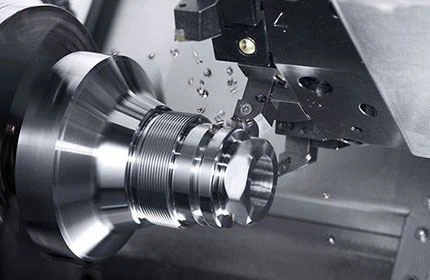
(5) Pay attention to the grinding of chip breakers Due to the strong and tough characteristics of stainless steel chips, the chip breaker grooves on the rake face of the tool should be properly ground.
It is suitable to make chip cutting interruption, chip storage, and chip removal convenient.
(6) Selection of cutting dosage According to the characteristics of stainless steel materials, low speed and large feed should be used for cutting.
When using ceramic tools for boring, the reasonable choice of cutting amount is one of the keys to giving full play to the performance of ceramic tools. pottery
For continuous cutting of porcelain tools, the cutting amount can be selected according to the relationship between wear durability and cutting amount; intermittent cutting should be
Determine a reasonable amount of cutting according to the law of tool damage. Due to the superior heat resistance and wear resistance of the ceramic knife, the cutting amount is
The impact of tool wear life is smaller than that of cemented carbide tools. In general, when machining with ceramic tools, the feed rate is
Is most sensitive to damage. Therefore, according to the nature of the workpiece material, the machine tool power, process system rigidity and blade strength
Under the premise of permission, when boring stainless steel parts, choose as high a cutting speed as possible, a larger back-cutting amount and a smaller
Of feed.
(7) The choice of cutting fluid should be appropriate. Because stainless steel has the characteristics of easy adhesion and poor heat dissipation, so in boring
It is very important to choose a cutting fluid with good anti-sticking and heat dissipation properties. For example, a cutting fluid with high chlorine content and good cooling,
An aqueous solution containing no mineral oil or sulfite for cleaning, rust prevention, and lubrication, such as HIL-2 synthetic cutting fluid.
Using the above-mentioned process method can overcome the difficulties of stainless steel processing, so that stainless steel tool life when drilling, reaming, boring
The life has been greatly improved, reducing the number of sharpening and tool changing operations, improving production efficiency and hole processing quality, and reducing workers In terms of labor intensity and production costs, satisfactory results can be achieved.
Stainless steel parts machining process
What Is Difficult With Stainless steel parts machining process
What is Difficult with Stainless steel parts machining process? How is the Stainless Steel Fabrication Processing & Difficult?
This type of material has high strength, large tangential stress, and large plastic deformation during cutting, so the cutting force is large. Besides, the material's thermal conductivity is extremely Poor, increasing by cutting temperature, and the high temperature is often concentrated in the narrow area near the cutting edge of the tool, thereby speeding up the tool Wear.
